Visiting Spreewald was like walking straight into a fairy tale! Imagine a place where people make their home in the heart of the forest. A place where canals outnumber roads and bridges are more common than crosswalks. A place where cars are obsolete since many of the homes are built on little islands, and wildlife roams free regardless of where your fence is.
This almost mythical sounding world is found in Spreewald, known in English as the Spree Forest, and it’s a place that has held on to its own unique German culture and traditions for centuries.
Today, we’re going to take you on a little trip to Spreewald!
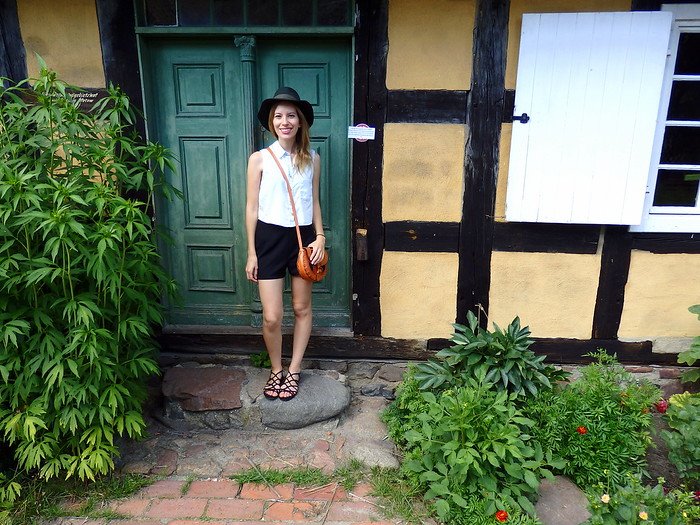
Spreewald Travel Guide: Things to Do, See, Eat, Drink & Experience in Spreewald, Germany
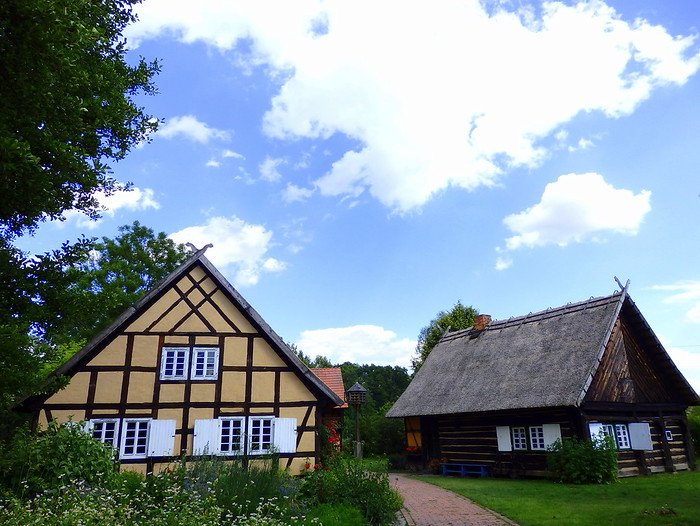
Visiting Spreewald & how to get there
Sam and I had the opportunity to visit the Spree Forest on my most recent trip to Germany, and it’s a destination that we won’t soon forget.
If you ever find yourself craving a little escape from the busy capital, this place is just a short 1.5-hour drive from Berlin but it feels like you’ve travelled back through time.
We picked up our rental car at the airport and followed the signs for the A111, to the A100/113/13 towards Lübbenau/Spreewald, taking exit 9 to Lübbenau.
It was a nice drive, especially towards the end, when we started to enter the forest.
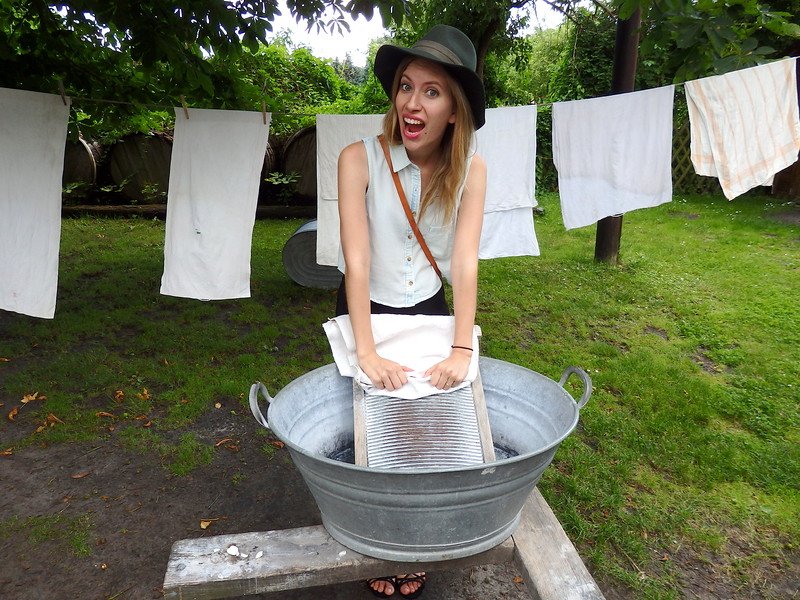
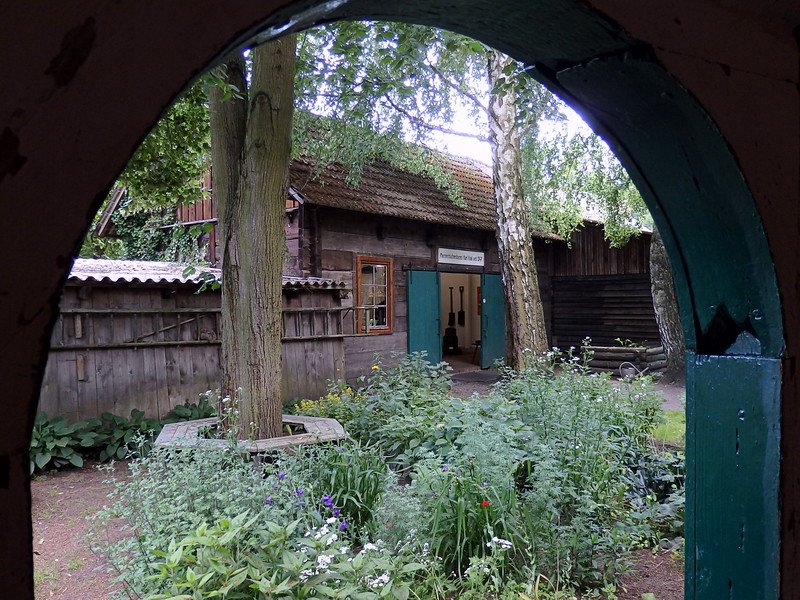
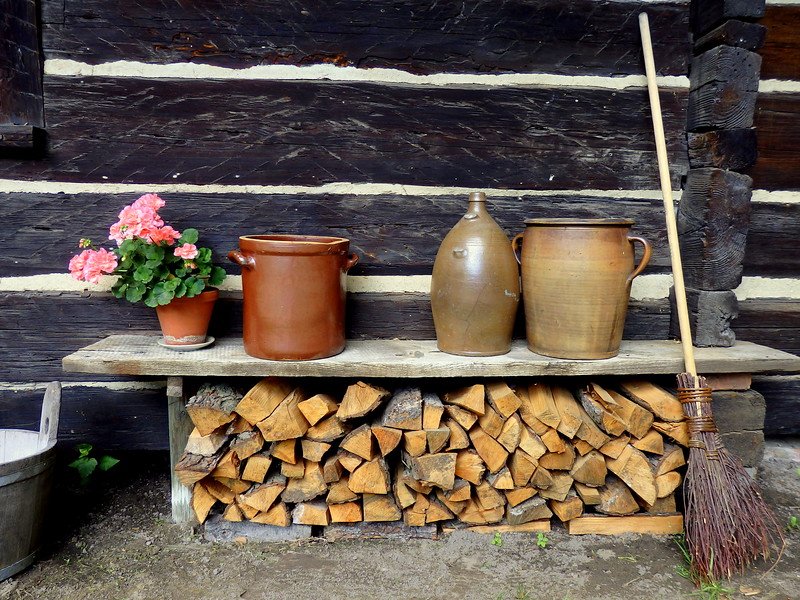
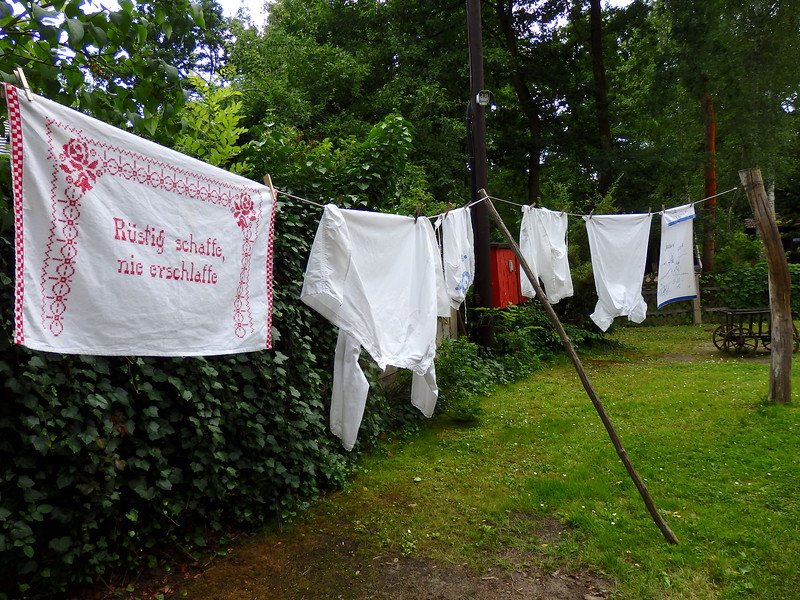

Not let me show you just a few of the unique things you can experience in Spreewald:
An introduction to Sorbian culture
First up, we visited the Freilandmuseum Lehde for a glimpse at the 19th-century Sorbian culture that existed in these woods. The place was set up like an open-air museum where you could freely walk around, wander into old homes, and experience some of the games and household duties for yourself – a great place for children, but also a fun place for adults who like their museum visits to be interactive.
I tried doing the laundry with a washboard the good old fashioned way, and I also attempted walking on stilts (a game that would have been played by the children at the time).
To give you a little bit of background, the Sorbs are a Slavic people who live mainly in the states of Brandenburg and Saxony. They speak their own languages (Wendish and Lusatian), they have their own traditional dress, and they have their own traditions. While their numbers have been shrinking, there is a big effort to try and keep their culture alive, and this outdoor museum is just a small part of it.
Sorbian Houses
While walking through the town with a guide, we learned that 19th-century Sorbian houses had one main room where the bulk of daily life took place – a room where you ate, slept, and carried out various chores.
What caught my eye is that in the corner of the room there was a rather large bed; my guide informed me that the reason for this was that the Sorbs used to sleep on family beds. That meant the grandparents, parents, and children would all share the same mattress as a way of staying warm.
Newlywed couples were sent up to the attic for a month to get on “the baby-making business” (her words, not mine) and then it was back down to the 3 generational bed. How they found time for more romantic escapades after that is beyond me.
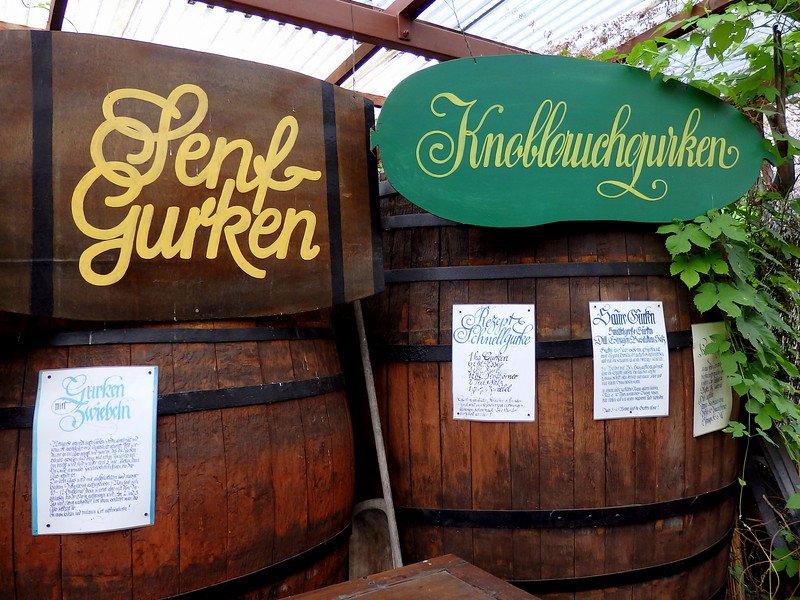
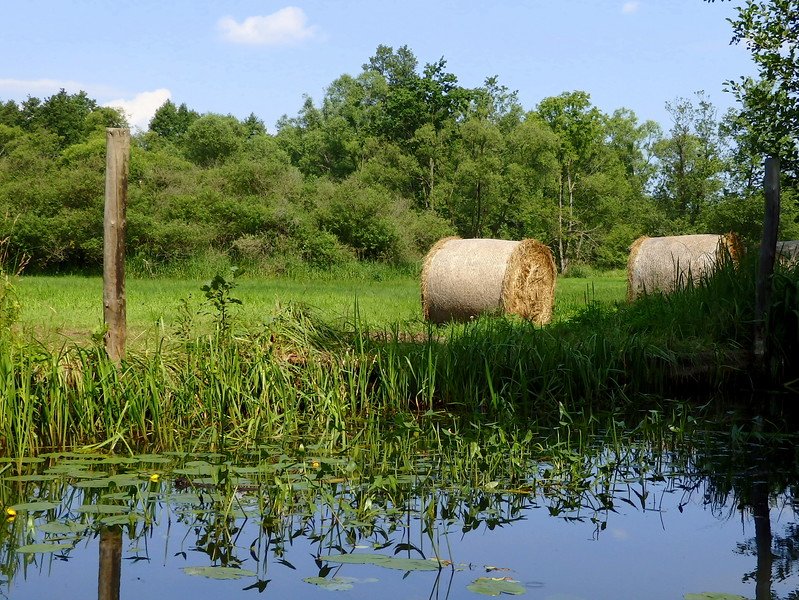

Sampling pickles by the barrel
The swampy terrain of Spreewald makes it an ideal location for growing cucumbers and this is a tradition that farmers have long held on to.
When we checked into the hotel, we were surprised to see that there was a Pickle Museum (Gurkenmuseum) right on the premises. That seemed too good to pass up!
The receptionist at the hotel doubled as our tour guide for a half-hour as she shared a bit of the history behind the pickles.
It turns out that many centuries ago, a law was passed allowing farmers to produce a maximum of 500 barrels of pickles without taxation. This was good enough for some, but others wanted to sell more pickles, so since the lawmakers had forgotten to specify how large the pickle barrels could be, the farmers built huge ones. Just check out the size of the barrel I’m standing next to – that was just for pickles! I got to sample different pickles during my visit to the Gurkenmuseum, and as we all know I’m a big fan of any museum that feeds you – I’m thinking back to Berlin’s Currywurst Museum now!
We also learned that a Pickle Festival takes place every summer and that girls from the area submit their best pickle recipes. Judges sample the submissions and the girl with the best tasting pickle recipe is crowned Pickle Queen for the year.
I was sad to miss the big event by only a few weeks, but if you’re in search of a unique festival, this is definitely one worth adding to your calendar.
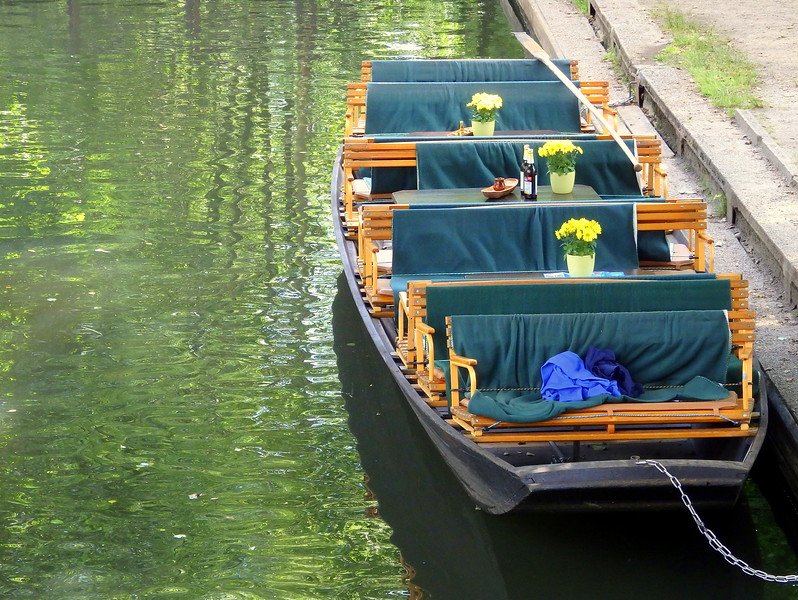
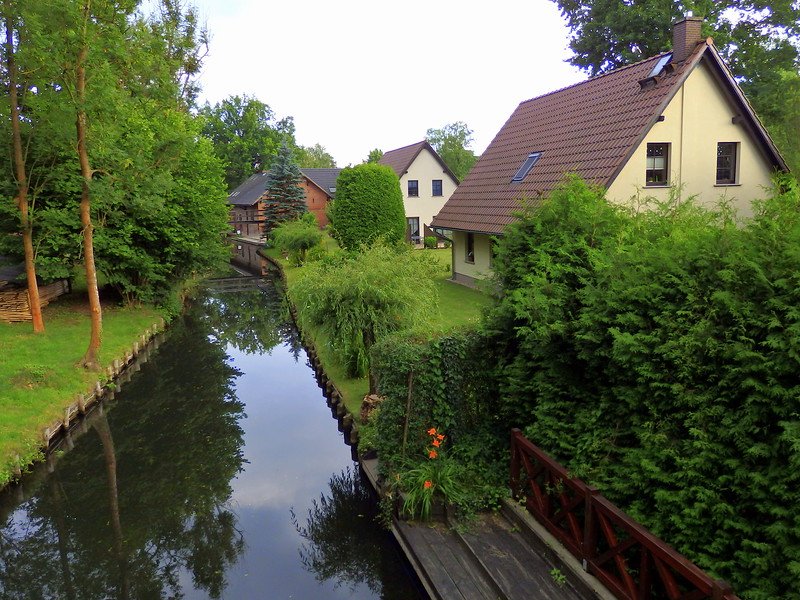
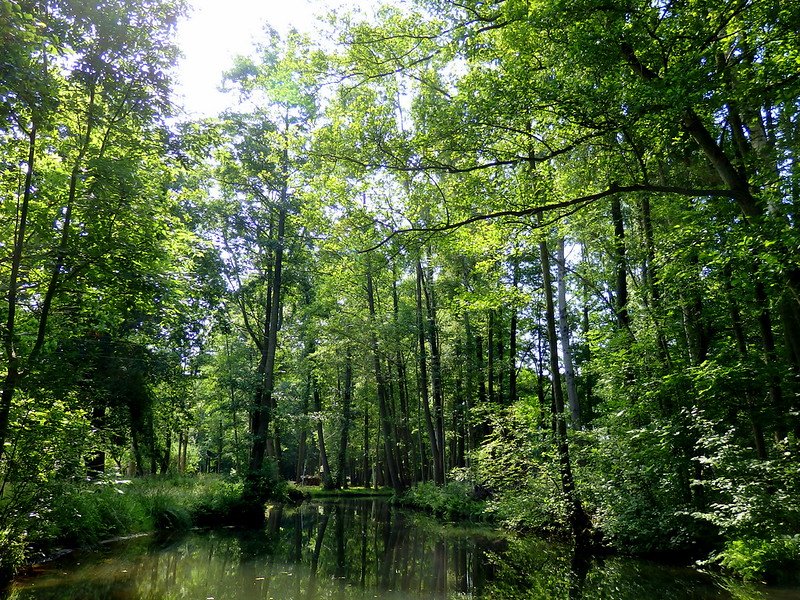
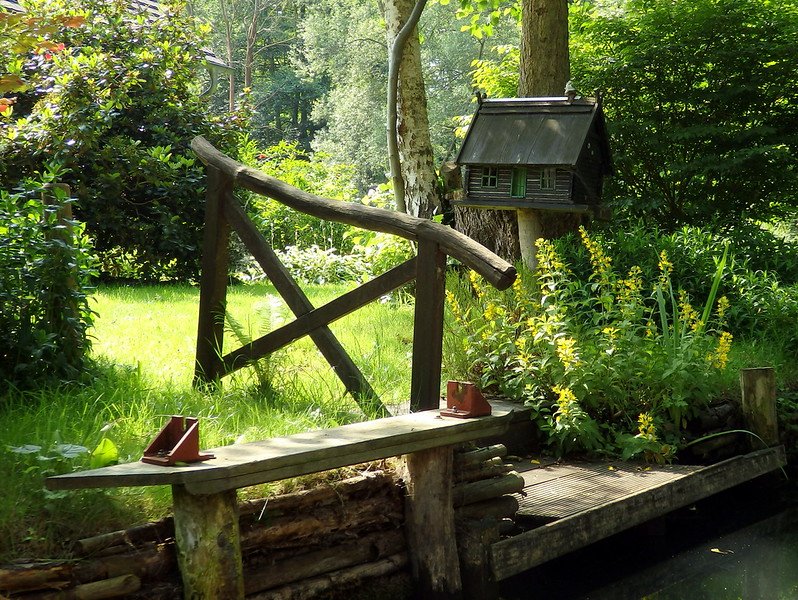
Punting down the canals in Spreewald
You can’t come to a village where waterways outnumber roads and not travel by punt.
These flat-bottomed boats are a fun way for visitors to experience the forest, but they are also very convenient for locals who need to transport goods – not only did we see crates of beer being delivered to restaurants by punt, but we also learned that some of the homes still receive their mail by punt!
On our second day visiting Spreewald, Sam and I headed down to the canal where we met our ‘punter’ and we set out for a leisurely journey through the woods.
We saw cute little cottages with timbered walls and reed roofs, we went past farms where animals grazed and bales of hay sat forgotten on the fields, and we crossed under wooden bridges that help connect the people who live on this network of islands.
Our guide used a 4.5-meter long pole to manoeuvre the canals and he made it look so easy that I was genuinely surprised when I tried it a few days later and discovered that it actually requires a lot of muscle to propel the punt forward.
Oh, and if you’re an avid kayaker, that’s another fun way to get around Spreewald.
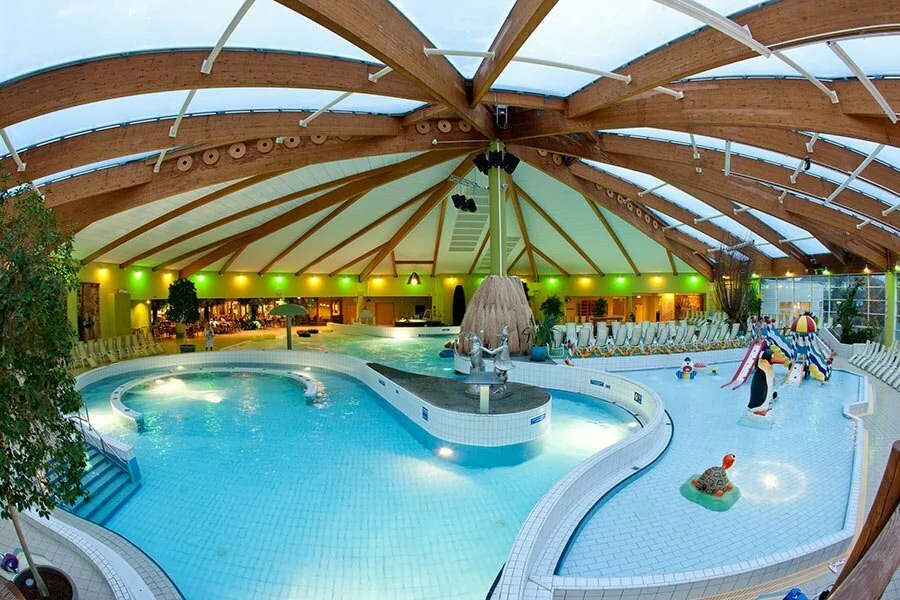
Spa and sauna time at Spreewelten
When I first heard about Spreewelten, I pictured a giant swimming complex geared towards families with children. While that is true to some extent, this place is equally as popular for adults who want to make use of the Sauna Village.
The Sauna Village is a collection of small cottages that have been transformed into saunas. Each cottage has a distinct style; in some, you sit next to wooden carvings of pigs and in others, you sit on wooden carvings of home furniture. There are saunas that smell like lemon and saunas that smell like peppermint. And when it comes to temperature, you have saunas that feel like a day in the tropics and saunas that make you feel like you’re descending into an active volcano as they reach 80 degrees Celsius.
Now before you go packing your swimsuit, I should mention that this is a naked sauna… Men, women, strangers, acquaintances, they all strip down to their birthday suits. Not only that but after the sauna people like to sunbathe…naked.
Having previously travelled to Finland, I already knew about naked sauna (though in Finland it’s generally segregated into men and women), but it still came as a bit of a surprise to find people just hanging out in the nude.
So if you don’t feel totally awkward stripping down in public and you’re up for something a little different, there’s naked sauna in Spreewelten.
Or you can just enjoy the pools, hot tubs, and communal napping areas with your bathing suit on like I did.
Where to stay in Spreewald
While visiting Spreewald we stayed at Hotelanlage Starick, which was located right in the middle of the forest and overlooking a canal.
Not only was the setting beautiful, but it was so peaceful out there that when I woke up at 4:50 a.m. on my first morning, I actually saw a baby deer munching on grass outside my window!
The hotel is also nearby some great restaurants including Quappenschänke (great potato soup with sausage), Gasthaus Hirschwinkel (delicious pike with crispy skin), and Kaupen 6 (Sam ordered a game goulash with cranberries and it was tasty).
For something a little different, the town of Lübbenau has turned part of the train station into a bed and breakfast where you get to sleep in a work of art. Spreewelten Pension has 11 rooms, and each of them was designed by a different local artist.
If you’re looking for more places to check out on your trip to Germany, another fascinating German town worth visiting is Quedlinburg.
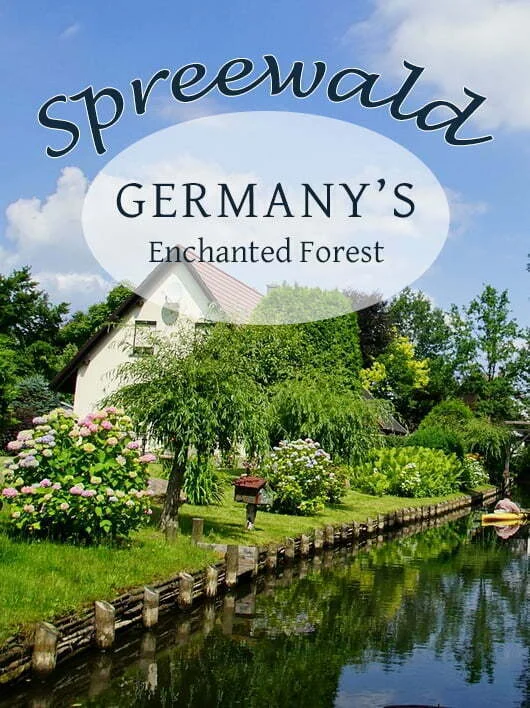
Spreewald Weekender: Tips, What to Eat, and How to Glide the Canals Like a Local
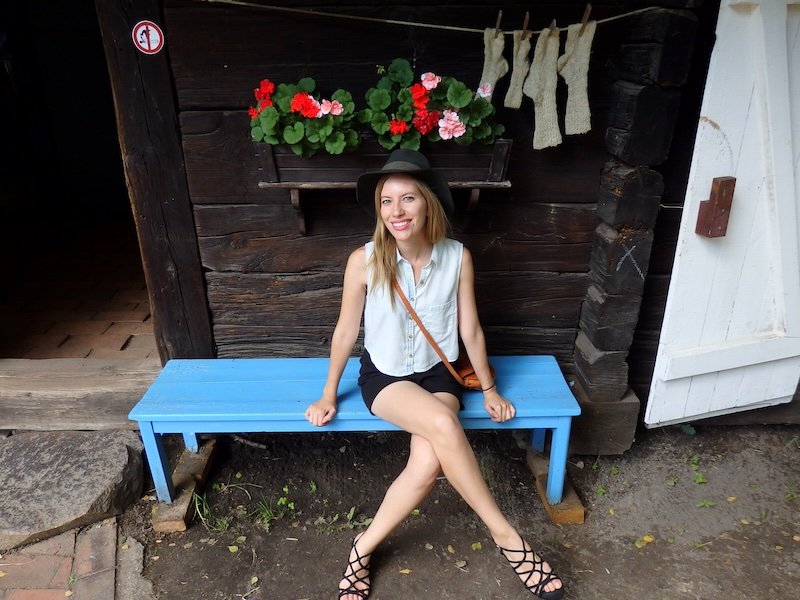
2–3 Day Spreewald Game Plan (Row-by-Row)
| Day | Base / Overnight | Morning | Midday | Afternoon | Evening |
|---|---|---|---|---|---|
| 1 | Lübbenau (gateway town) | Arrive by car or regional train; drop bags. Freilandmuseum Lehde for Sorbian life (family bed! attic newlyweds!). | Pickle tasting at the Gurkenmuseum or a village farm stand. Picnic on a bridge bench. | Punt cruise (1.5–2.5 hrs) from Lübbenau→Lehde→Lübbenau; watch parcels, beer crates, and mail drift by. | Spreewelten: sauna village for braver souls (textile-free) or pools/hot tubs (bathing suits). Dinner: fish with crispy skin + potatoes with quark & linseed oil. |
| 2 | Burg (Spreewald) or stay put in Lübbenau | Bike hire and flat loop through meadows to Leipe; coffee and cake along the canal. | Kayak/canoe (or SUP) short loop—expect kingfishers if you’re lucky. | Spreewald Therme soak (if based in Burg) or second, shorter punt to a café you spotted yesterday. | Rustic tavern dinner; try Gurkenradler (beer + lemonade) or regional herb liqueur; early night under star-dark skies. |
| 3 (optional) | Same | Drive/train to Lübben for castle park, then swing to Straupitz (Schinkel church + historic triple mill pressing linseed oil). | Farm-to-table lunch; stock up on jars of gherkins for home. | Lazy last stroll on the Malócon (Lübbenau harbour boardwalk) with ice cream. | Return to Berlin/Dresden with cheeks pink from fresh air and sauna steam. |
How long should each stop be?
If you only have a weekend, Days 1–2 are the sweet spot. Add Day 3 if you love mills, churches, and slower travel.
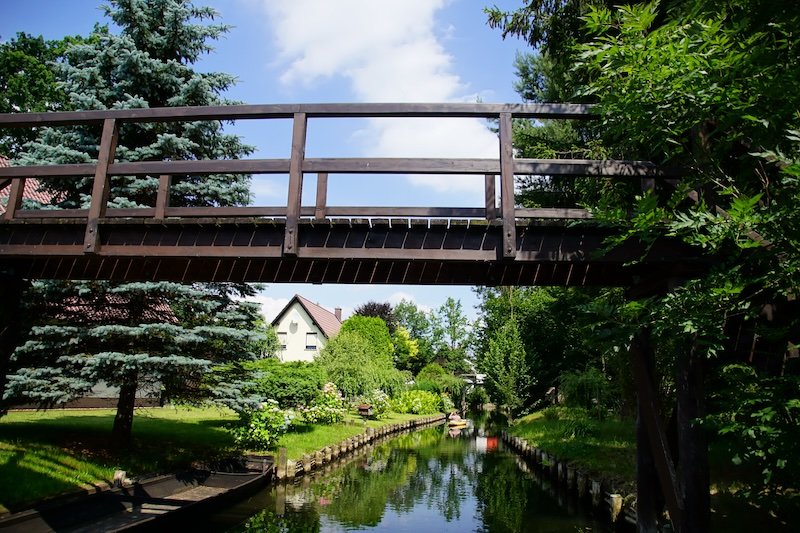
Getting There & Getting Around: Transportation Guide
From Berlin (no car):
Regional trains (RE) to Lübbenau (Spreewald) or Lübben run frequently; travel time ~1–1.5 hrs depending on departure. From the station, it’s a 15–20-minute stroll or short taxi to the harbour punts. If you’re staying in Burg, take the train to Vetschau or Cottbus and a connecting bus/taxi.
By car:
The A13 points you south; the final kilometres meander through fields and pine. Parking is well-signed near harbours; carry coins or a card for machines.
Once there:
- On water: Punts (guided), kayaks/canoes (self-paddle), or SUP.
- On land: Bicycles (flat trails, easy navigation), and your own two feet.
- Taxis & mini-buses fill the gaps between towns if you don’t bike.
Punts and paddles move slowly (that’s the charm!). Build buffer time between activities—you’re here to float, not sprint.
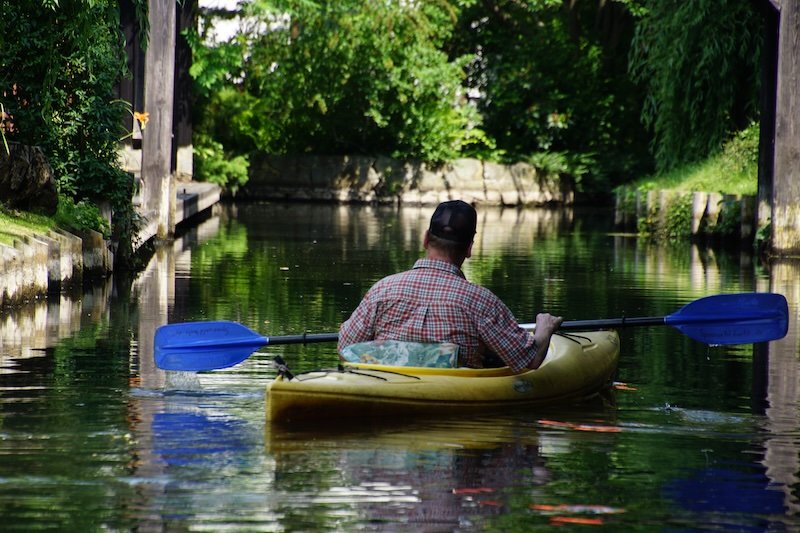
Punt vs. Paddle (Choose Your Glide)
| Mode | Best For | Feel | Time & Price* | Good to Know |
|---|---|---|---|---|
| Punt (Kahn) | Stories + scenery with zero effort | Cozy, social; your punter poling with a 4.5 m staff | 1–2.5 hrs; ~€18–30 pp group / private from ~€90+ | Warm layers in shoulder seasons; bring a cushion if you’re fidgety. Book a themed cruise (sunset, mulled wine, pickle tastings). |
| Kayak/Canoe | Photographers, independent explorers | Quiet, close to water; dragonflies as escorts | Hire by hour or day; from ~€10–15/hr per boat | Collect a water map; canals are signed like streets. Pack dry bag, snack, and respect right-of-way—the punts are bigger than you. |
| SUP | Core workout + calm stretches | Playful, great for golden hour | Often ~€15–20/hr | Choose wide boards; mornings are glassy, afternoons breezier. |
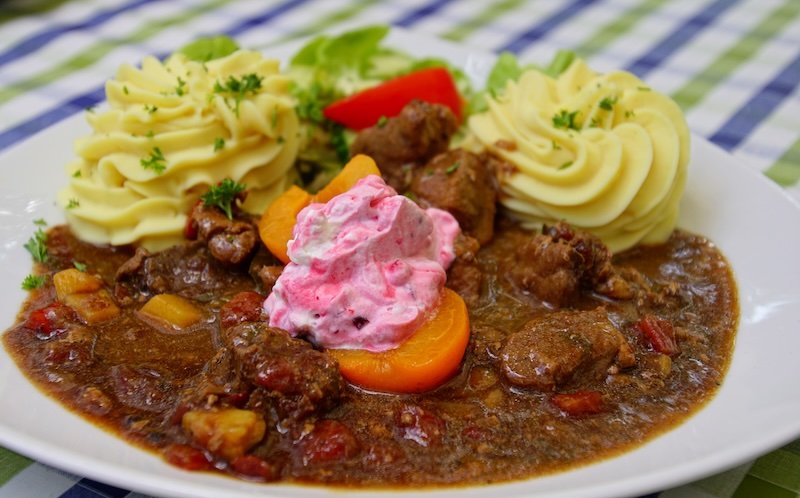
What (and Where) to Eat: A Mini Field Guide
Spreewald table culture is hearty, local, and perfect after a chilly glide.
- Spreewälder Gurken (gherkins): Dill, garlic, mustard seed, sometimes spicy—buy by the jar from farm stalls or museum shops.
- Pellkartoffeln mit Quark & Leinöl: Earthy boiled potatoes with tangy quark and linseed oil (nutty, golden). When in Straupitz, visit the historic mill where the oil is still pressed.
- Zander & Hecht: Pike-perch and pike are common mains; crispy-skin is the house style.
- Cucumber soup and cucumber lemonade make summer sing; in autumn, switch to pumpkin and mushroom specials.
- Plinse: Fluffy pancakes (try with apple or quark).
- Liquid locals: Gurkenradler (beer + lemon soda), regional pils, or a post-meal Kräuterlikör.
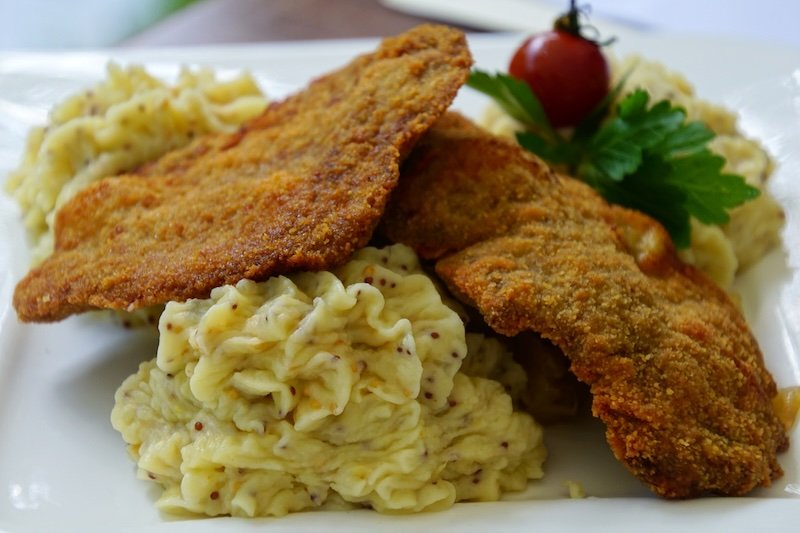
Where to try:
- Lehde & Leipe taverns right on the canals (menus scribbled on boards; portions generous).
- Lübbenau harbour—easy for first tastes right after a cruise.
- Burg boasts the Spreewald Therme restaurant for wholesome spa-style dishes.
Ordering tip: Menus lean seasonal; if you see “Tagesgericht” (daily special), trust it.
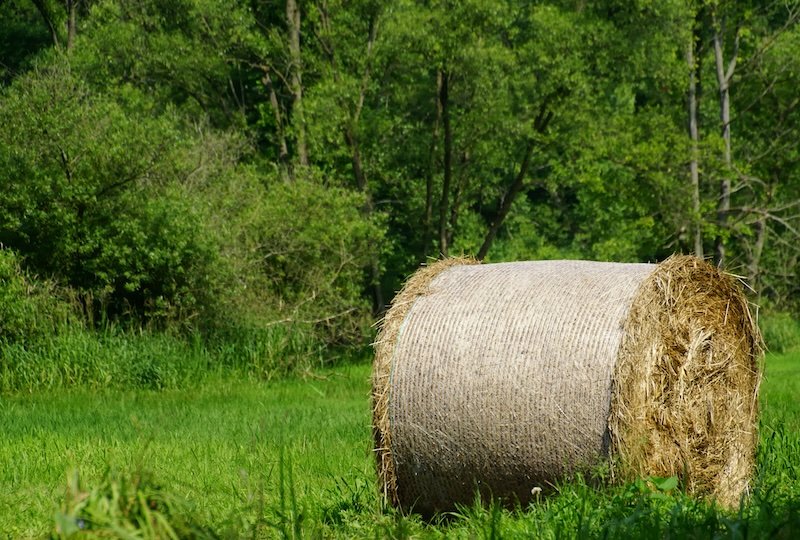
Seasons, What to Pack, and When to Visit
| Season | What it feels like | Pack Emphasis |
|---|---|---|
| Spring (Apr–May) | Waking forest, cool mornings, fresh winds | Light down or fleece, waterproof shell, beanie, cotton scarf, closed-toe shoes for damp banks |
| Summer (Jun–Aug) | Lush green, warm to hot; best paddling | Sunhat, breathable layers, sandals that strap on, mosquito repellent, swimwear for spa |
| Autumn (Sep–Oct) | Amber reeds, crisp air, misty mornings | Wool sweater/cardigan, rain jacket, fingerless gloves, thermos for tea |
| Winter (Nov–Mar) | Quiet magic; occasional snow; sauna prime time | Heavy coat, thermal leggings, warm socks, sauna flip-flops + towel/robe if you’re spa-hopping |

Costs & Booking at a Glance (Typical Ranges
| Experience | Budget |
|---|---|
| Open-air museum (Freilandmuseum Lehde) | ~€6–9 pp |
| Group punt (1.5–2.5 hrs) | ~€18–30 pp |
| Private punt (2 hrs) | from ~€90 per boat |
| Kayak/Canoe hire | ~€10–15/hr or €30–45/day |
| Spa/sauna day ticket | ~€20–35 pp; towel/robe rental extra |
| Bike hire | ~€10–15/day |
| Parking near harbours | ~€3–8/day |
Reserve punts and spa slots on sunny weekends and school holidays. On shoulder-season weekdays, you can often stroll up and sail away.
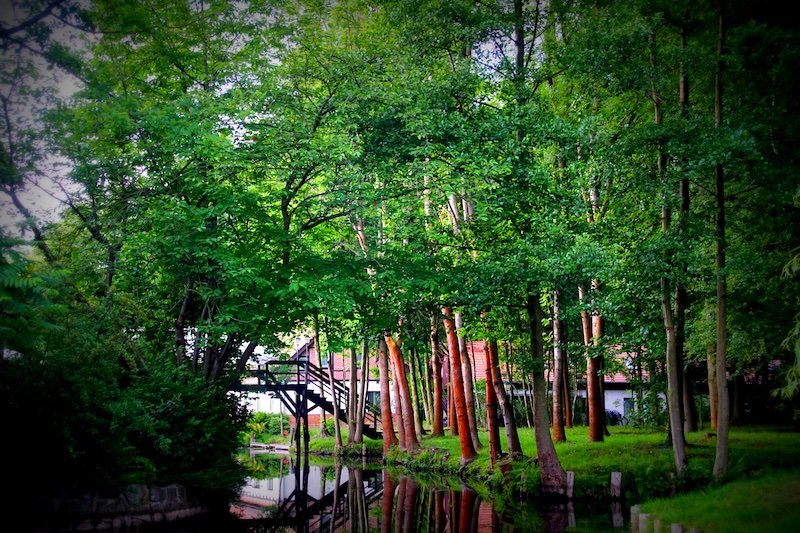
Sorbian Culture: Brief History
- Who are the Sorbs? A West Slavic people with roots in Brandenburg and Saxony, speakers of Lower/Upper Sorbian (you’ll see bilingual signs).
- Family beds & attic honeymoons: The 19th-century practice you saw at Freilandmuseum Lehde isn’t a fairy tale—it was a practical heating solution and a peek into community life.
- Why so many cucumbers? The wetland microclimate + sandy soils = cucumber paradise. Pickling preserved harvests before refrigeration—and created a brand the region still proudly wears.
- Poling, not paddling: The Kahn and pole technique are to Spreewald what gondolas are to Venice—workhorse and icon.
A few friendly words:
- “Witajśo!” (Welcome! in Lower Sorbian)
- “Dźakuję!” (Thank you!)
- “Gurke” (cucumber) is universal—smiles guaranteed.
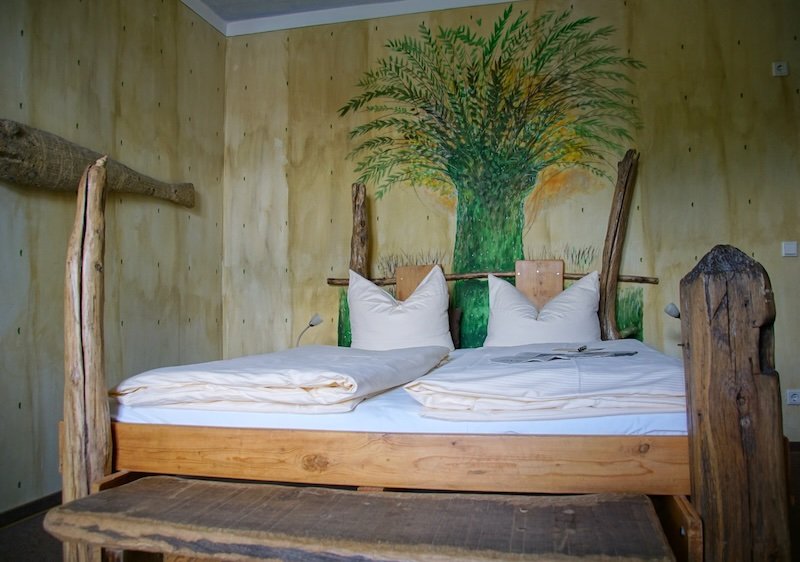
Where to Sleep (and Why You’ll Love It)
- Canal-edge inns around Lehde/Lübbenau give you sunrise punts and deer grazing cameos.
- Art rooms at Spreewelten Pension (Lübbenau station) turn overnights into gallery sleepovers.
- Burg (Spreewald) options suit spa-first travellers—Spreewald Therme is a robe’s swish away.
- Farm stays pop up in outlying hamlets; expect breakfast spreads that redefine “local.”
Booking note: Weekends in June–September fill fast; midweek shoulder season is calm and good-value.

Spreewald FAQ: Plan Your Getaway Weekend
1) What’s the easiest way to reach Spreewald from Berlin without a car?
Regional trains run frequently from Berlin to Lübbenau (Spreewald) and Lübben in about an hour to 90 minutes. From either station it’s a short taxi ride or a 15–20 minute walk to the harbours where punts and kayak rentals are based. If you’re staying in Burg (Spreewald), connect via Vetschau or Cottbus and take a local bus or taxi the last few kilometres.
2) Should I book a punt cruise in advance or just show up?
On sunny weekends and school holidays, book ahead—especially if you want a themed or private cruise. On shoulder-season weekdays you can usually stroll up and join the next departure. If rain looks likely, ask for a covered punt when you reserve.
3) Punt, kayak, or SUP—what’s right for me?
Choose a guided punt if you want stories, zero effort, and a guaranteed route through photogenic canals. Pick a kayak or canoe if you like setting your own pace, stopping for photos, and exploring quieter side arms; just grab a water map and follow canal signage. SUP is ideal for short, calm sessions at golden hour. Families often mix a short punt on Day 1 and a gentle paddle loop on Day 2.
4) How many days do I need and what’s a simple itinerary?
Two days is perfect for a first visit: arrive and tour the Freilandmuseum Lehde, taste pickles, and take a punt on Day 1; bike to Leipe and hire a kayak or visit a spa on Day 2. Add a third day if you’d like to see Straupitz’s historic mill and church, linger in Lübben’s castle park, or schedule more sauna time.
5) When is the best season to visit?
Spreewald is lovely year-round. Summer brings lush reeds, warm paddling, and long evenings; spring is fresh and quiet. Autumn delivers amber colours and misty mornings that look like oil paintings. Winter trades motion for mood—silent canals, early twilights, and peak sauna culture. Pack layers in every season and expect cool mornings near the water.
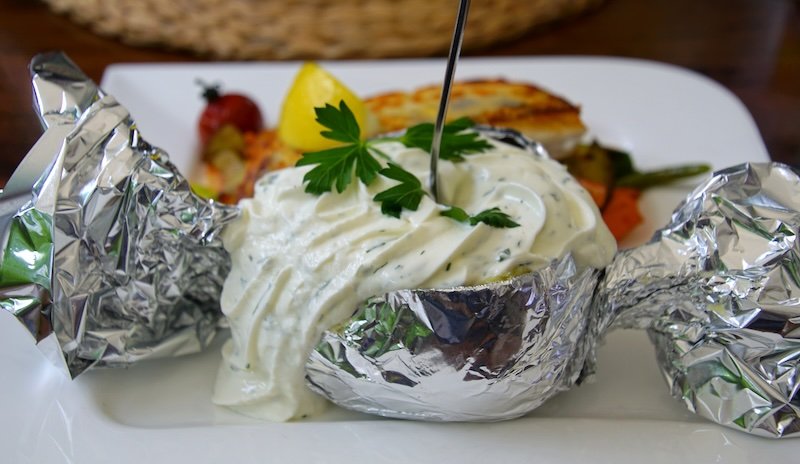
6) What should I eat and drink while I’m there?
Start with Spreewälder gherkins—mild, garlicky, or spicy—and potatoes with quark and nutty linseed oil. River fish like pike-perch with crispy skin is a classic, as are cucumber soup in summer and hearty game stews in autumn. For sweets, try plinse (fluffy pancakes). Wash it down with a local pils, a herb liqueur, or a refreshing “Gurkenradler” (beer cut with lemon soda).
7) Is Spreewald good for kids?
Yes—flat bike paths, short punt loops, playgrounds in Lübben/Lübbenau, and family pools at Spreewelten make it easy with little travellers. Keep water activities shorter (60–90 minutes), carry snacks, and let them help spot kingfishers, ducks, and herons from the boat.
8) I’ve heard about “naked sauna.” What’s the etiquette?
Textile-free sauna culture is normal in the Sauna Village at Spreewelten and at Spreewald Therme. Shower before and after, bring or rent a towel to sit on, and keep voices low—saunas are for unwinding. Pools and public areas often allow or require swimwear; the signage is clear, so follow posted rules and you’ll be fine.
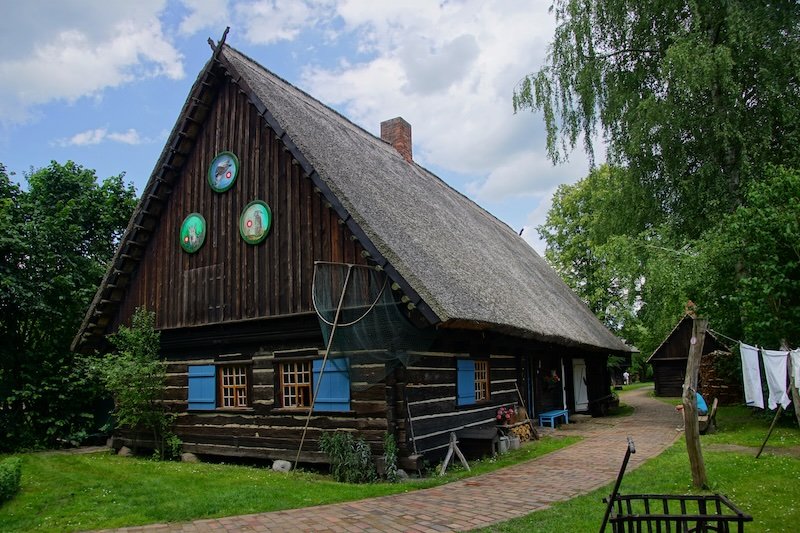
9) What does “Sorbian” mean and where can I learn more?
The Sorbs are a West Slavic minority native to Brandenburg and Saxony with their own language, dress, and customs. You’ll see bilingual signs and, in museums, family-bed sleeping arrangements and traditional farm life. The Freilandmuseum Lehde is the best hands-on introduction, and village events in summer showcase music, crafts, and foodways that keep the culture alive.
10) How much should I budget for activities?
Typical ballpark figures: €18–30 per person for a 1.5–2.5-hour group punt, from around €90 for a private boat, €10–15 per hour to hire a kayak or canoe, €20–35 for a spa/sauna day ticket (plus small fees for towel/robe rental), and €10–15 per day for a bike. Museum entries are usually under €10. Prices vary by season and operator, but these ranges cover most plans.
11) Any packing tips I’ll be glad I read later?
Bring layers that block wind on the water, a compact rain shell, and shoes that can handle damp banks. For paddling, add a hat, sunscreen, bug spray in summer, and a small dry bag for your phone and camera. Spa-goers should pack flip-flops and a towel or plan to rent on site. Photographers will love a polarizing filter and a microfiber cloth for misty mornings.
12) What unique events should I try to catch?
Summer gherkin festivals (“Gurkentage”) rotate among towns, complete with tastings, music, and the crowning of a Pickle Queen. Throughout the warm months you’ll find themed punt rides—sunset, mulled wine in shoulder season, even tasting cruises. Check notice boards at the Lübbenau or Lübben tourist offices when you arrive; schedules change, but there’s almost always something delicious or musical floating by.
Have you ever visited Spreewald or any other cool villages set in the forest?
This trip was planned in partnership with the German National Tourism Board as part of their #JoinGermanTradition campaign which seeks to highlight unique customs and traditions across Germany.

Us Canadian prudes will never get used to nude saunas, will we? 😛 I was just in Germany for the Half-Timbered Houses Route and I had such an amazing time. Germany is so diverse!
What an incredibly adorable place! Wish I could go there. I am actually going to Germany in November, so hopefully then it will be a possibility.
Also, I’m loving your new design! 🙂
This sounds like such an incredible place. I love anywhere with boats and water – it always makes a place feel more peaceful, and more still. I think it’s so important not to lose cultural heritage. I love all the conveniences of globalisation (accessible wifi / up-to-date info about world affairs / being able to talk to friends on the other side of the world at the push of a button), but I think sometimes we’re in danger of losing the things that make us individual, and that give us our identity. I love the uniqeness of this place. Thanks so much for sharing! 🙂
Sadly, I haven’t been to the Spreewald although I actually live in Germany. Ahem! In my defence, it’s one of the biggest European countries on the continent and I have the luxury of being able to go whenever I want to, so where’s the hurry……!
Having said that indeed, the Spreewald have some of the best pickles and cucumbers in the world and we all chomp away as much as we can. They simply are the best. I’d better get to scrubbing and be a “real” German housewife LOL!
Wow! I had no idea such a place still existed. If I ever make it to Berlin, this will definitely be on my bucket list. Just curious, but before the wall came down was this in East or West Germany?
Michael, Speewald was part of East Germany.
I love these sorts of open-air museums! There’s an excellent one near Riga and all sorts of fun events and festivals are held there. The one in Oslo is great, too!
after spending so long in Germany I really believe that it’s a country that has loads to offer and most of the beauty is outside the main cities. love your photos
I’m glad you enjoyed the traditions of this German region and shared it. It really adds to the diversity besides all the nice cities etc. Thank you for your post! 🙂
Hello Audrey Bergner…that you for a very nicely done and informative description of the Spreewald. I am an American who had the good fortune of living in Germany for many years. Am also a German linquist and spend much of my retired life doing research and writing about German history and traditions. One bit of research was about the Spreewald and the unfortunate realities which already are affecting this forested area. Because of climate change, shifting weather patterns, and rising temperatures, the Spreewald is threatened by a decreasing supply of wate. Tthere is ongoing research to save it, including diverting water from other large rivers. It will be of enormous expense but they are serriously looking at various solutionss. Visitors may want to plan a visit sooner rather than later!
I hope your travel instincts will bring you to the Garmisch-Partenkirchen area and upper Bavaria’s limestone alps if they haven’t already. Local customs still prevail and your descriptive narrative style and personal curiosity would fit nicely into the mountainous terrain. A response is welcome. R